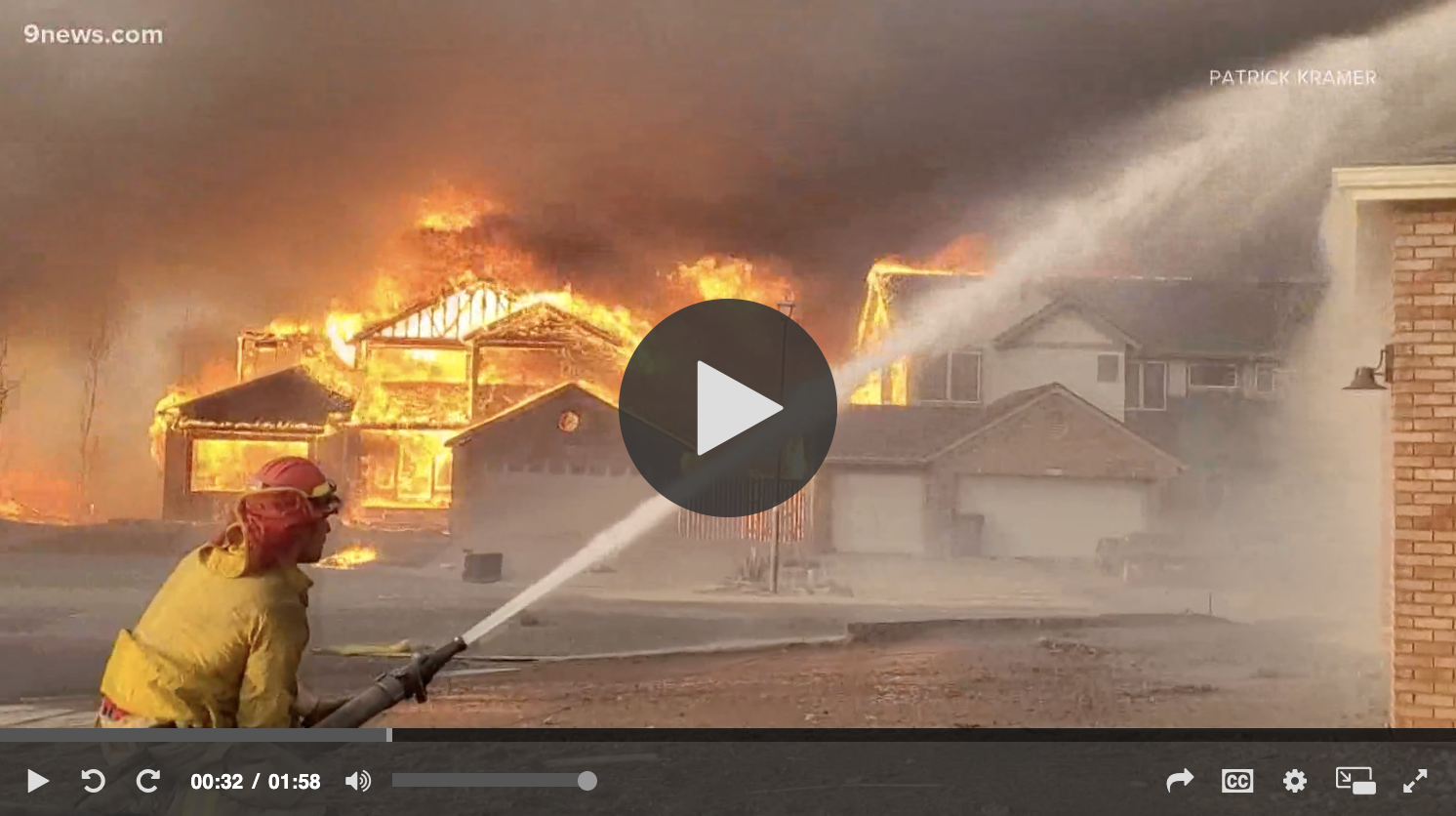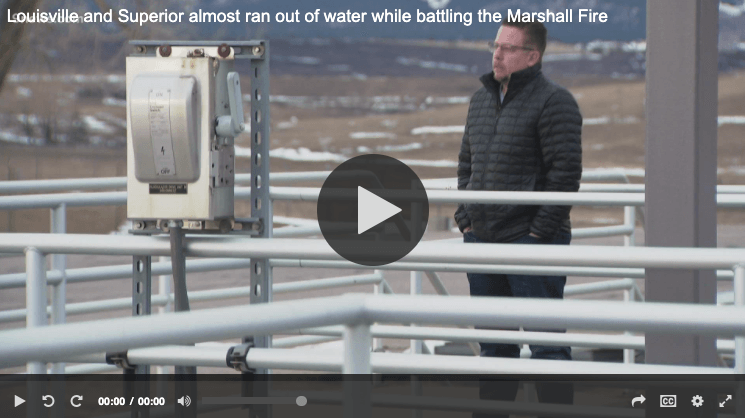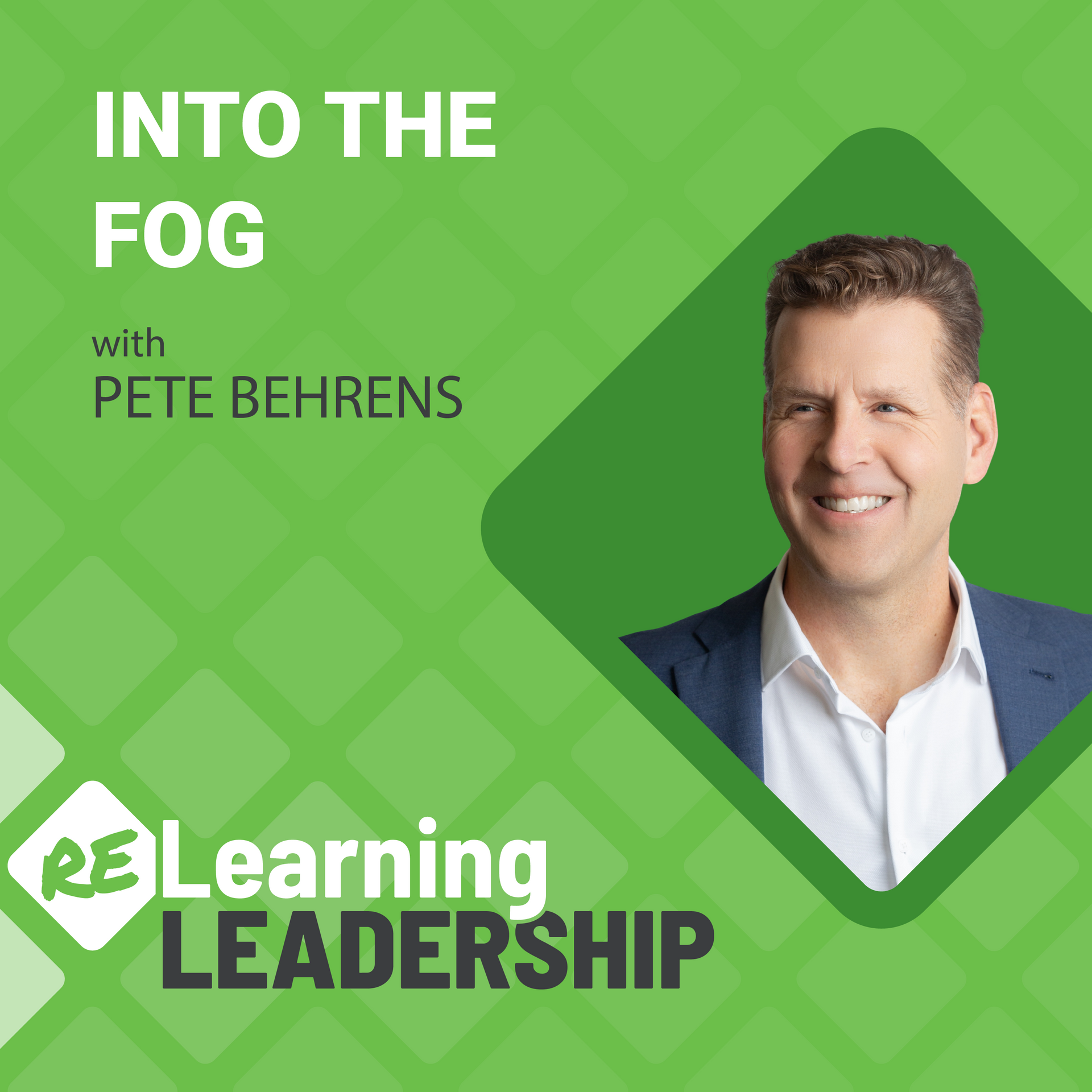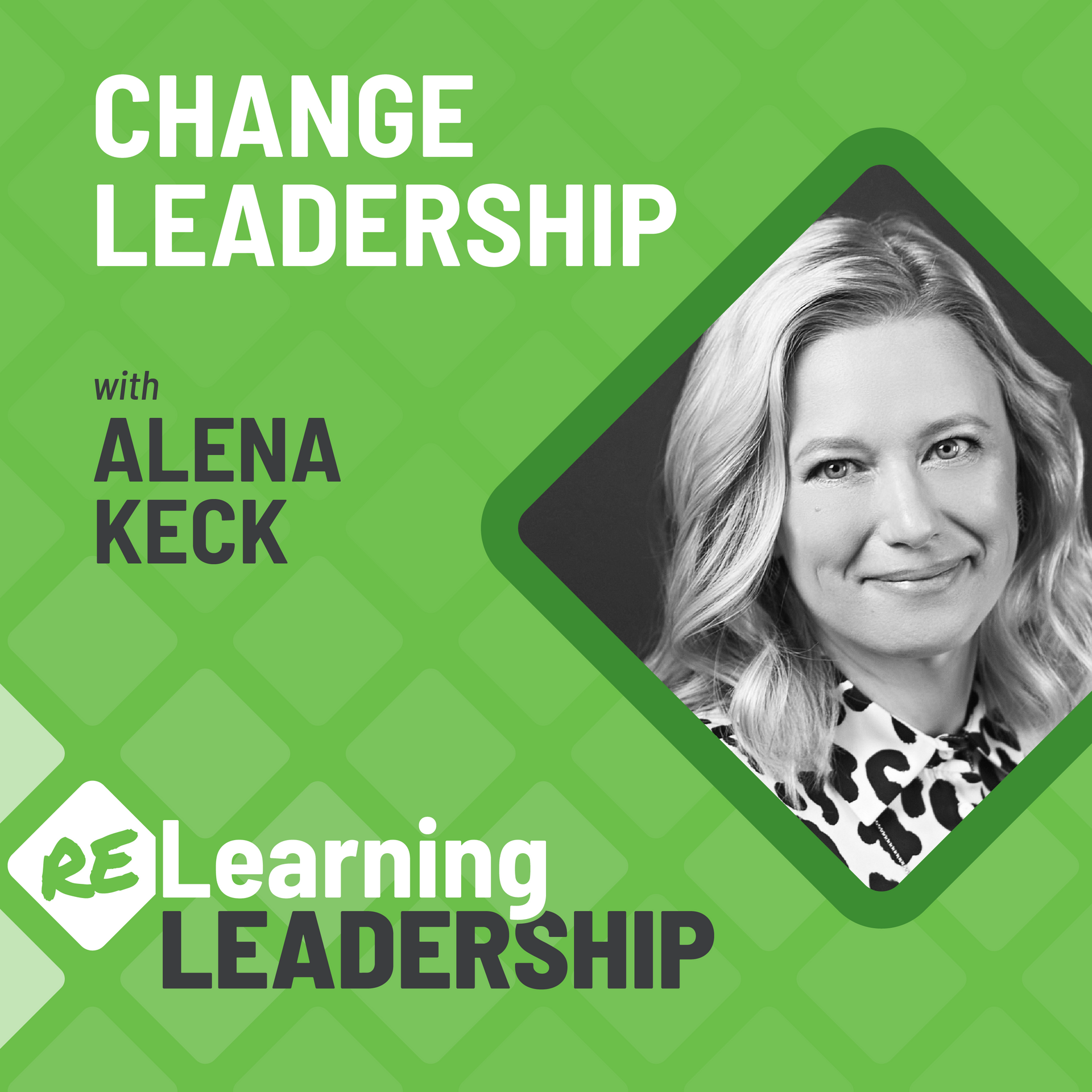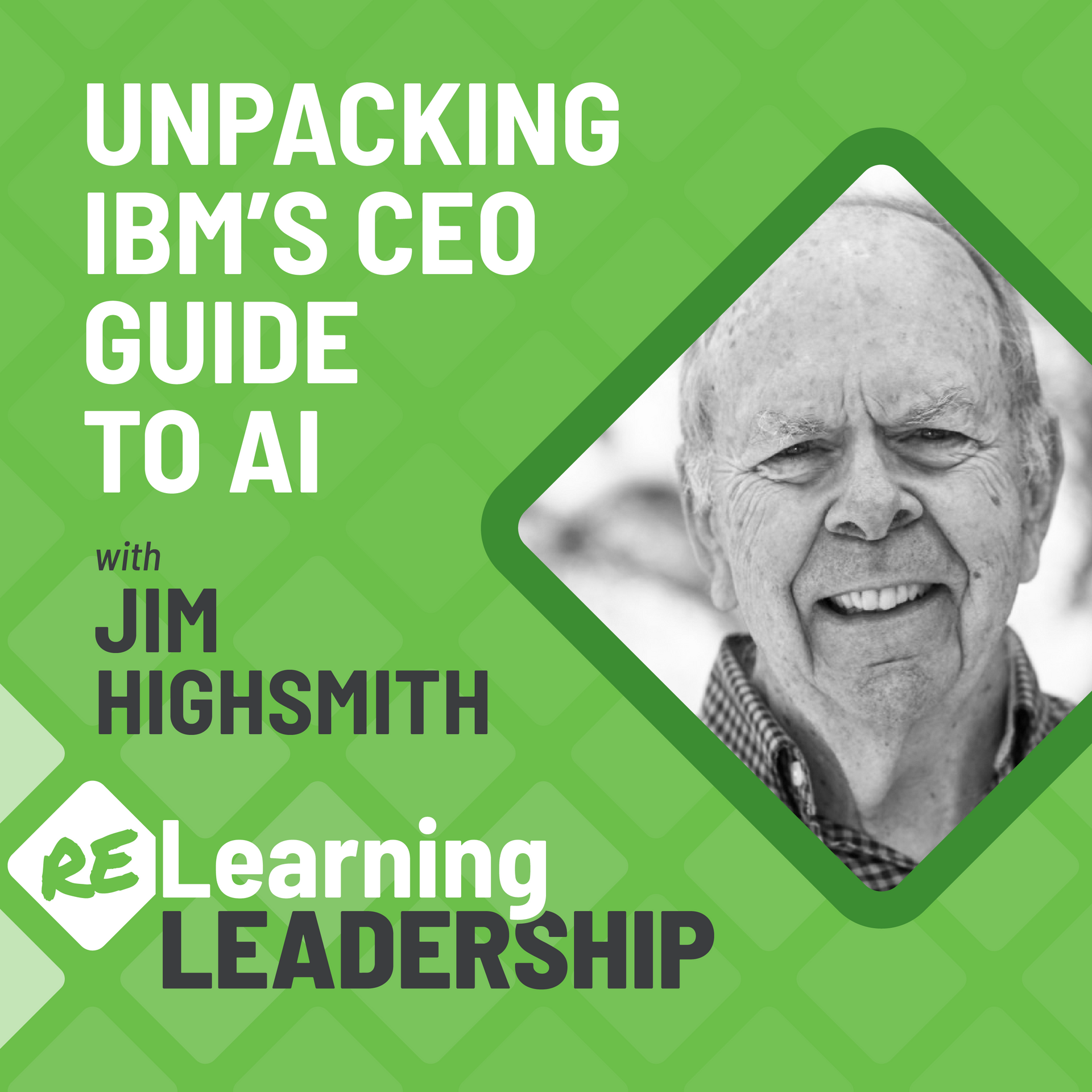21: A Time To Decide: Part 2 — The Marshall Fire
Pete shares the second reason he paused the podcast in January.
Pete experienced two lightning bolts life threw at him at the end of December — the end of his mother’s fight with cancer, and a catastrophic fire that displaced his family from their home.
In Part II, Pete shares the journey he and Jana experienced through the evacuation and aftermath of the most destructive fire in Colorado’s history — The Marshall Fire that destroyed over 1,000 homes in their small towns of Louisville & Superior, CO.
Update on Pete & Jana
I (Pete) realize that I never provided an update in the episode on our current situation. I didn’t mean to leave everyone hanging as I was focused on the raw story versus the aftermath. Here is a brief synopsis…
For many of our neighbors who lost everything, it will take 6-12 months to clean up and 2-4 years to rebuild. COVID-impacted supply chains, limited crews, and a housing shortage in the Denver Metro area make rebuilding quite difficult and expensive. Many of our friends are underinsured as insurance coverage did not keep pace with cost of housing/rebuilding in Colorado.
For us who have homes, yet are close to the fire with smoke and fire damage, we are grateful to have most of our belongs and our home to fix. However, the “fix” is a complex gray zone of what it means to be “clean” from smoke and fire damage. We are all forced into a negotiation game with insurance companies who claim cleaning surfaces is enough, yet experts say the industrial-like fire which includes ash from paint, chemicals, insulation, metals and more create a toxic ash/air that penetrates everything. And so while items may smell “clean”, it is difficult to really know.
Jana and I were fortunate to have been under contract for a new home in Louisville (away from the fire) before the fire occurred. And while the purchase transaction was in limbo as we evaluated damage to our home, the sale did go through and we feel incredibly grateful that we have a permanent home to live in as we deal with the clean up and preparation for sale of our damaged home. It will be a few months before we are able to put that home on the market.New Paragraph
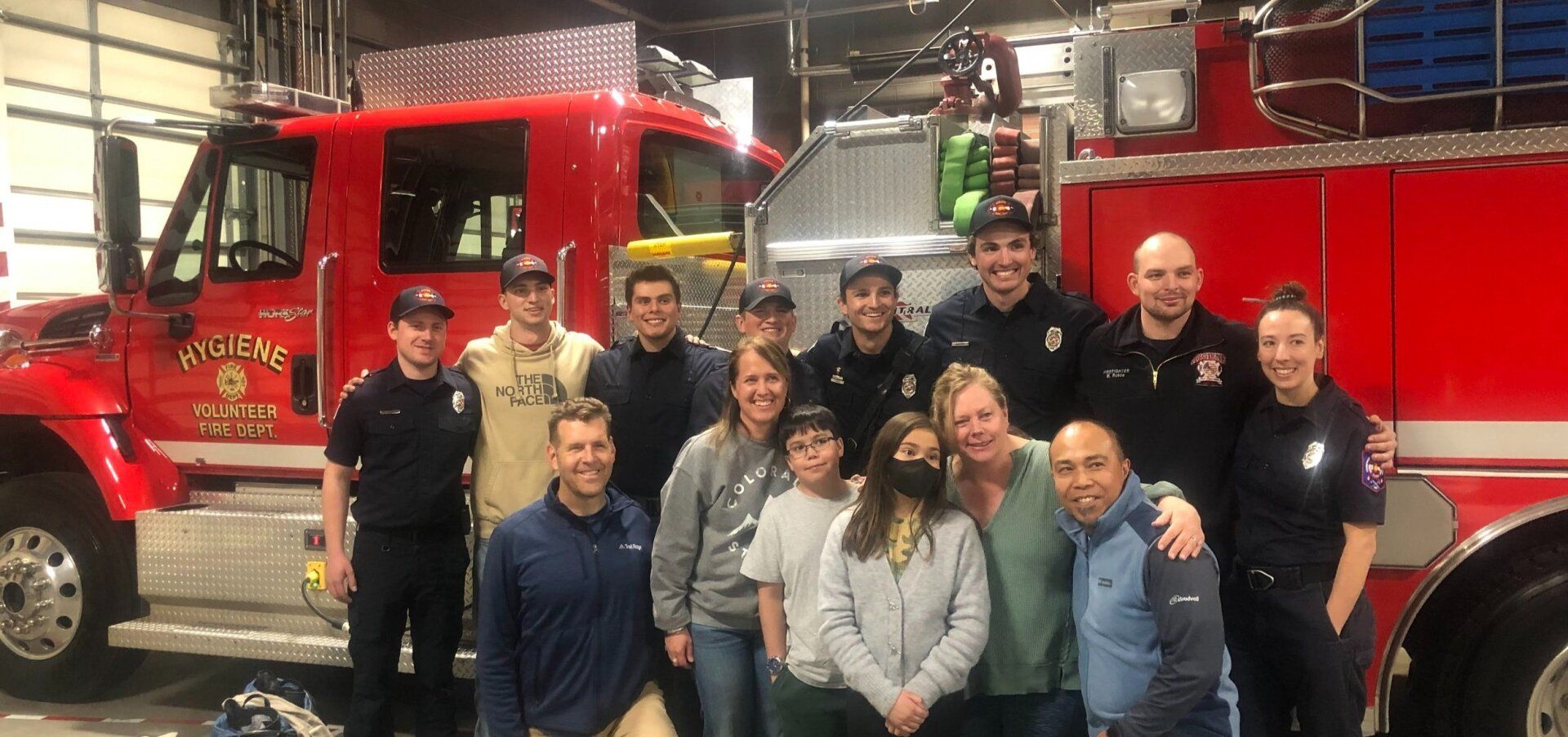
Meet the Hygiene Firefighters who fought on our street
It was amazing to meet the firefighters who were part of the overall team to fight on our street. To hear their stories of not having water in the fire hydrants and having to go back and forth to the firehouse where there was stored water, only to return to have lost another house in the transfer!
It felt as good for them to meet us and know the impact they made as us to meet them to thank them for their service! This department only has 2 firefighters on paid staff, yet about 12 firefighters from their volunteer team fought that day on our street! Thank You!
About the Marshall Fire...
The Marshall Fire was the most destructive fire in Colorado history, driven by strong winds and unseasonably dry fuels. While the final fire footprint is estimated to be 6,000 acres, it forced the evacuation of over 35,000 residents and eventually destroyed over 1,100 structures, including residences and large commercial buildings. What began as a grass fire quickly became an urban conflagration, as the fire moved into a densely populated suburban area and jumped from structure to structure very quickly under high wind conditions.
Trail Ridge Drive in Louisville
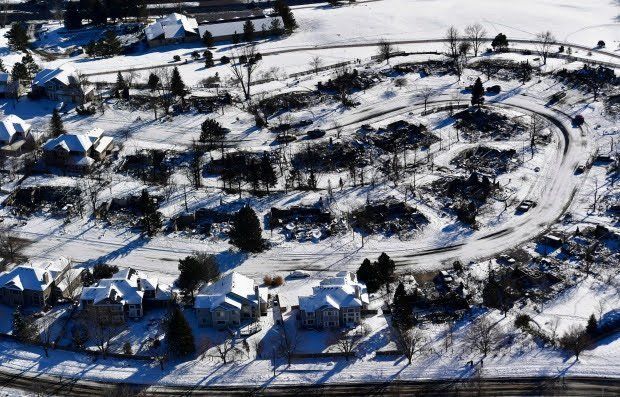
Louisville Via Appia & McCaslin to Harper Lake

A view south along Davidson Mesa
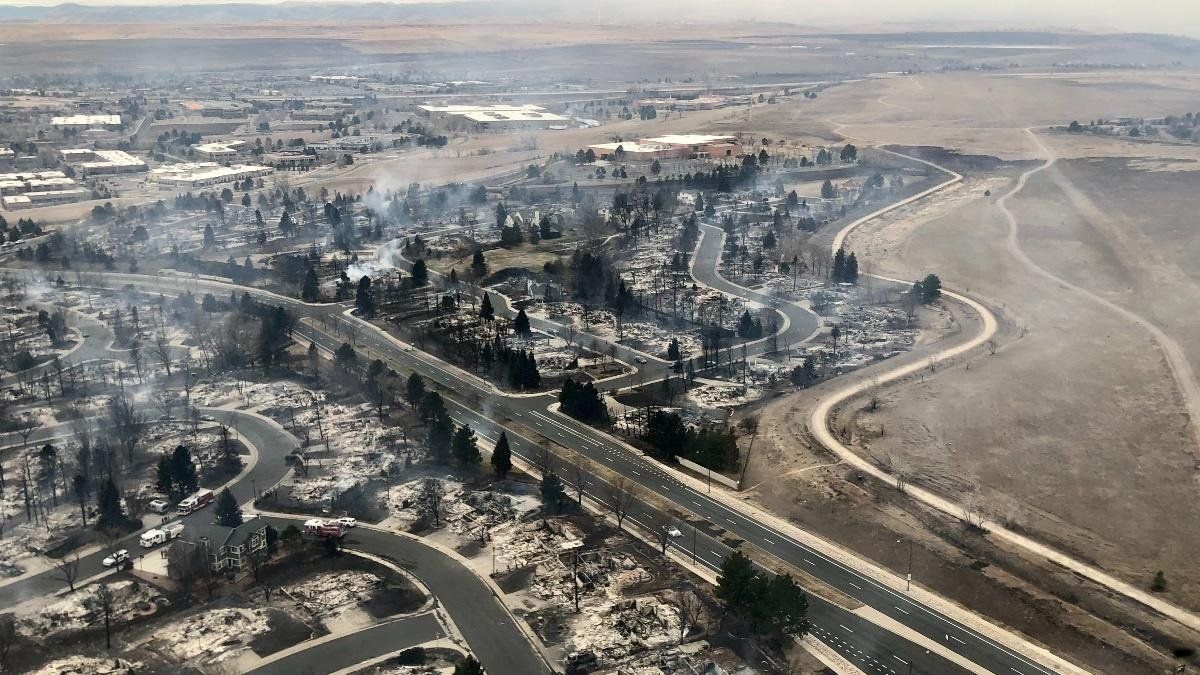
9News First Responder Video
9News Water Treatment Employees Video
Trail Ridge Neighbor Instagram Feed of Fire Damage
Relearning from this episode…
This was an episode of reflection, rather than relearning.
This experience was an emotional rollercoaster for Pete. And it is only the beginning. While the destruction from the fire took less than twelve hours, the city’s physical rebuilding process will take years. And the scars that people in the community experienced and the emotional healing required will last a lifetime.
They are incredibly grateful for the support of family and friends. The sequence of events of Pete's mother’s end-of-life journey side-by-side with the evacuation and devastation of their neighborhood, crashed our world. Jana and Pete have been running on adrenaline and focused on safety and survival. But the community kept them afloat, surrounding them with love, care, and support.
As I mentioned at the outset. I’m not seeking to dole out a lot of advice from this two-part episode on A Time to Decide. It was therapeutic just to be able to tell the stories, and we hope it was therapeutic, to some degree, for you to listen. If nothing else, take some time to decide what is most valuable to you. Cherish it. Celebrate it. Take the time to decide now because, likely, later, when it matters most, you won’t have the time.
We Celebrate Joy Zimmerman’s Milestone
Joy Zimmerman, the creator of the music you hear on this podcast, is celebrating an award-winning album this summer. The Canvas Before Us reached Top #8 on the International Folk Chart!
It feels appropriate in this episode, A Time to Decide, to grab a song title called
Not Enough Time. In this cute, uplifting, and humorous ditty, Joy bemoans not having enough time with the ones we love. Here’s to hoping your glass is full when you start to drink.
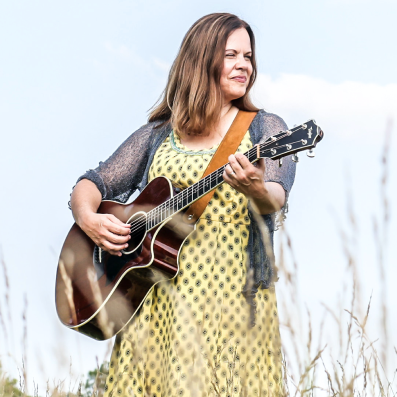
Episode Transcript
What happens when life interrupts work?
Welcome to another episode of Relearning Leadership, where we explore a specific leadership challenge and break it down to help improve your leadership, your organization…and even your personal life.
Today, we continue to highlight that last phrase “personal life”. In this two-part series, I bring to light how recent events in my personal life crashed into my work life, and this podcast. In Part I, I shared the journey of my mother’s fight with leukemia and her time to decide the end of her life. In Part II, I share a catastrophic story that unfolded just as my mother entered hospice on December 30th, 2021.
If you didn’t get a chance to listen to Part I of A Time to Decide, I would encourage you to do so, as it may provide some context to this episode.
My name is Pete Behrens. Thank you for joining us today. Let’s dive in.
A Time to Decide Part II: The Marshall Fire
The morning of December 30th, just after bringing my father back home from visiting my mother in hospice, we noticed a smoke plume in the distance of our home. As we live near a large native grassland, we took our bikes to ride out to see if we could locate the source of the smoke. However, the headwind was so strong that my partner Jana and I turned back halfway because the dust and sand was whipping into our eyes. However, our two grown boys continued on, and from their vantage point it appeared that the fire was in the neighboring openspace called Marshall Mesa, across the highway where I often ride my bike along the dirt trails. At that point, we didn’t feel threatened by the fire.
We returned home to prepare lunch and play a game, as we were all together for our winter holiday break. Over the next hour, our comfort, however, turned into chaos as my son began seeing evacuation orders on Twitter for our neighboring town of Superior. Jana confirmed through early news sources that our town of Louisville was also on high alert to evacuate. I felt a slow realization come over me. “Can’t we first just finish lunch?” “Is this really happening?” “OK, maybe it is happening, but just as a precaution, right?” “OK, record everything in the house! Grab the important files and photo albums, let’s go!” Within 15 minutes, it was all hands on deck, preparing evacuation from our suburban neighborhood.
As we were personally in evacuation protocol from our home, we learned that my father’s independent living center and my sister’s home, where my mother was in home hospice, on oxygen, were also being evacuated. Since my father was unable to self-evacuate and my sister was dealing with figuring out how to possibly evacuate a hospice patient, our family split to help both. Thus, our focus shifted from our personal safety to an extended family safety.
You don’t realize how many cars are in a US suburban neighborhood until they are all out on the road at the same time. I read a statistic that a car spends 95% of its life parked. Now, I believe it. This statistic was illuminating in front of me as our family’s three cars attempted to evacuate our small neighborhood. Within one block, we were stuck in an evacuation traffic jam.
Our three cars took various paths to help the rest of our family. So while I found a path out of our town within 20-30 minutes along one route, my son was stranded on another road, unable to move for two hours. Yet, he helped his mom take yet a different route that allowed her to get to my sister’s home within an hour. That’s one mile in an hour! While this may be typical for downtown Manhattan at rush hour, it never happens in our sleepy suburbia.
As Jana reached my sister’s house to help them evacuate my mother, she discovered an incredibly complex decision process at hand. My mother required oxygen to stay alive, and that required electricity. If they put her in a car, she would be without electricity for an indefinite period of time, as Jana attested to in the hour it took her just to get there. Their son Chris was working on fitting mom’s mattress into their car for an evacuation. Because they learned upon calling 911 that they couldn’t guarantee a pickup. And even if they could, Rebecca was unable to locate a hospice center to even take her to. They were forced to choose between staying back and assuring—at least for the time being—electricity and a safe place to stay, and leaving with no place to go and very little support en route.
A few minutes later, almost by divine intervention, an ambulance arrived. As the paramedics were evaluating the situation and about to escort my mom to a Boulder hospital, a place with little control and strict COVID visiting restrictions, the Longmont TRU Hospice Care Center called to let them know they opened up a bed for my mom. A small miracle among such vast chaos. If you missed the story of my mother’s time to decide the end of her life, I encourage you to listen to the first part of this episode.
You’ve likely guessed by now the scene I am describing. We were witnessing first-hand the Marshall Fire in Louisville, CO. What we didn’t realize until we were safely relocated to a friend’s house—and sat in shock in front of the continuous stream of news that evening—was that the fire jumped the highway and entered the grassland where we had just ridden our bikes before lunch. We were now seeing video of homes on fire across Superior and Louisville, including our neighborhood. In fact, one news crew set up their recording location at Harper Lake, one of our favorite walking paths.
I want to thank everyone that reached out to us during this chaos to offer us a place to stay during the evacuation. We ended up with a good friend Von Rhea, who you might have heard on this podcast in Season 1, Connecting in a Disconnected World. Von and his dog Moose were incredible hosts for our family, including my 88 year-old father! Watching your father navigate stairs on his butt, sliding down on his own, was worth the visit! When I mentioned in Part I that we woke up to missed phone calls at 1:30 in the morning from my sister—that was from Von’s house.
That evening, we sat mesmerized by the TV screen. We couldn’t move. The images were simply unbelievable. As we sat, we continuously monitored social media and texts from friends and neighbors. People from all over the world were reaching out to us to ask about our well-being. We are so thankful for our circles of caring friends.
However, our biggest shock came that evening as we received a personal video that was taken by somebody who was on our street and showing our neighbors’ homes engulfed in flames. As it panned around quickly, it appeared that the few homes next to ours were on fire, but it was difficult to tell which was which, as they all looked alike, engulfed in flames. The word surreal means a bizarre mix of fact and fantasy. That felt like the word of choice that evening. The facts we were witnessing with our own eyes were hard to imagine being true. While we went to bed—I won’t say sleep, because that didn’t really happen that night—the fire continued to rage on, as did the courageous first responders fighting it. And we prepared ourselves that our house was a casualty.
The next morning was calm, and our surreal feeling continued. We learned overnight that the winds finally did settle down, allowing firefighters to actually fight the fire, versus just managing the evacuation. During the high winds of the previous day, which reached about 100 miles per hour, there was simply no way to control the spread of that fire. While Jana was on the phone to our insurance company that morning to start a claims process, we received a picture of our home from a neighbor. Our home looked completely unscarred. Once again, we couldn’t believe the facts we were seeing. How could this be, as we watched a video from the night before showing engulfing flames? However, since the picture showed nothing of the surrounding area, we actually didn’t believe it and asked for a video to show our home in relation to the area. Once we received that, we still couldn’t believe what we were seeing.
The line of the fire literally came to our doorstep, damaging or destroying all the homes west of us and sparing ours and the homes east. Our home was on the separation line.
Many of my non-U.S. friends and colleagues have asked, “How could this fire have happened in December in Colorado? Isn’t there snow in Colorado in December? Isn’t it winter?” Yes, while the mountains have received snow this year—and I’ve heard the skiing is good, although I haven’t been up there!—Denver was on a record pace with no snowfall for over 232 days when the fire hit! The incredibly dry grasslands provided rich fuel for a growing fire. And the over 100 mile-per-hour winds whipped it across the landscape with no chance to control it. And once it hit the neighborhoods abutting the open space, the wood fences, the decks, and siding were easy places for the fire to catch. Ironically, we received snow the very next day.
I’m torn between the fluke coincidence of all of these factors that led to the fire and the underlying climate change creating such a condition for the fire to even be viable.
It is hard to put into words what our neighborhood looks and feels like in the aftermath of the fire. While I have never experienced one, from what I have seen in the movies, it feels and smells like a war zone from WWI or WWII. Each plot where homes once stood are ash and rubble with an occasional rock chimney or metal bed frame warped by the heat. It looks and smells like death. You look up from some streets and can see an entire 100+ home neighborhood with only a single home or two left standing. Even after a few weeks, I still catch myself awestruck by the devastation across our landscape. Yet, just from a mile away, I can walk the streets as if nothing has changed.
If you visit the episode page on our website, I posted an aerial picture of our street, where you can see our home on the far left-middle, with all the homes west of us completely damaged or completely destroyed by fire. Yet this picture shows only 26 of the over 1,000 homes that were destroyed in that twelve-hour fire. Another picture I posted shows two other neighborhoods adjacent to ours, where 95% of the homes were destroyed. I posted some links to a neighbor’s Instagram feed that share some excellent close-up photos and a couple of great news feeds that share the first responders’ experiences in fighting this fire.
The day after the fire, I had to sneak into our neighborhood to see our house first-hand, as the police were still barricading the impacted areas. As I walked from the east, the unburned half of our neighborhood, besides the smell of smoke, it felt like any other walk on any other day. However, as I approached our home, I began to see the burnt landscape before me. An overwhelming sense of humbleness overcame me. While our homes appear so strong, compared to this fire, they were simply fuel.
As I took a closer look at our home that day, I began to notice more details surrounding our home. The mulch was removed all around our home. Our Christmas light extension cord was burnt and unplugged. A shrub and tree were burnt. Our fence was burned down and taken down in two parts of our yard. Our recycling bin was melted halfway through. But then I noticed more. A sprinkler hose line was cut. A rock wall pushed down. A burnt ladder and broken fire hose were left behind. What I was seeing was evidence of firefighter activity all around our house. They were clearing burning mulch and chopping down burning shrubs. They were getting at burning embers buried in that mulch. In fact, there were still burning embers in that mulch as I ran my foot through it that day. Our home was on the save line that the firefighters drew that day, and they did everything to save our house, and the houses adjacent, from burning.
For the next two hours, my son Matt and I took a water hose to douse the remaining embers all around our house. As my son helped me dig up the ground to unearth burning embers, I sprayed them with water. The next day, I invited a friend’s father, Greg Thompson, who is a retired Fire Chief, over to share some reflections with me about the condition of our house. He noticed ash and soot ember clumps all over our patio and pergola cover. He said those likely saved our house from being destroyed. Had our pergola and patio been made of wood, they would have likely caught fire and cascaded to the house. However, our pergola is made of aluminum, and our patio is stamped concrete. Small choices. Big impact.
Over the next few days as we could return to the neighborhood, we would meet neighbors either fortunate like us to still have a home or unfortunate to have lost everything. Some of them had been on vacation and unable to evacuate anything. Most, like us, expected the evacuation to be a temporary relocation and just took a few essentials. There are just no words to console such a loss. Just words of shock and sadness. Our neighbors across the street, whose house appears “fine” from the front, took me around back to show me more. The fire started on his wood deck, then burned its way right through the middle of his house, following an air gap between two floor joists. It looks like someone took a blow torch to cut his home in half. Firefighters had to break into his home and fight the fire from the inside, preserving much of it, and likely the houses next door as well.
Our good friends, the Fantalises, across the street, who we often sit on their deck for drinks and chats, lost everything. They were visiting family out east while the fire stole all of their possessions and physical memories. We walked around their home foundation, having difficulty even figuring out which part of the house we were looking at through all of the destruction. Much less finding anything to salvage. The ex-Fire Chief pointed out the I-beam which supported those upper floors. He said that I-beam metal expands at about 1,700 degrees. We saw it bent and collapsed in a heap of destruction. There are a thousand stories like theirs.
I heard a few stories of neighbors staying back, not evacuating, protecting their homes and likely many others. In one neighborhood where a stray ember landed, causing a fire in their yard, a few neighbors spent a couple of hours spraying water and putting it out. Had they evacuated and let that fire go, with their yard connected to open space connecting to another subdivision, likely saved hundreds of more homes where other good friends we know live, as well as my sister. We also heard stories of two residents who stayed back to protect their homes and belongings, only to be overwhelmed by the fire, and perishing.
I learned that during the fire, the towns of Superior and Louisville were using up all of the water. Not only from fighting fires, but also from broken pipes of burnt homes. Further, the Superior Water Plant and pumps were damaged in the fire as well. So as we sat comfortably at a friend’s home watching the news, some Louisville Water employees went back into the raging fire zone to figure out how to get more water to the firefighters. They came to a quick realization. The only way to accomplish this immediately was to let all of the untreated water back into the treated system. So against all of their training, they opened the valves to allow untreated water into the Louisville and Superior water mains, supplying the firefighters with the water they needed to fight the fire, knowing they were contaminating the entire system with bacteria and who knows what else.
It took me 15 minutes to decide to evacuate with no direct evidence of fire in our neighborhood. Others waited until there were flying embers and choking smoke to leave. And others, still, who stayed to fight.
But what about those who went back to help when the danger was greatest? You expect first responders to do this. That’s their job. But a water utility employee is not a first responder. However, that day, they made a decision to respond. They chose to act. Where does the employee relationship to a job stop and the human behind that job start? My work, and the work of 35,000 people that day, stopped. We chose to take care of ourselves and our families. Yet these employees chose to work. Their personal life and their work life collided on that day. I cannot imagine there is a section in the handbook in the water treatment plant that outlines this scenario. However, their decision that night likely saved thousands of homes, including ours.
The past few weeks have felt like an emotional rollercoaster. And it is only the beginning. While the destruction from the fire took less than twelve hours, our city’s physical rebuilding process will take years. And the scars that people in our community have experienced and the emotional healing required will last a lifetime.
We are incredibly grateful for the support of our family and friends. The sequence of events of my mother’s end-of-life journey, side-by-side with the evacuation and devastation of our neighborhood, crashed into our world. Jana and I have been running on adrenaline and focused on our own safety and survival. But our community has kept us afloat, surrounding us with love, care, and support.
At dinner last night with our good friends Lisa and Eric, Eric said that during that evening of the fire, he was pondering whether he was going to be a helper or indeed needing help himself as he contemplated whether their home was lost. They were fortunate and have become helpers, as have so many others in our community.
As I mentioned at the outset. I’m not seeking to dole out a lot of advice from this two-part episode on A Time to Decide. For me, it was therapeutic just to be able to tell the stories, and I hope it was therapeutic, to some degree, for you to listen. If nothing else, take some time now to decide what is most valuable to you. Cherish it. Celebrate it. Take the time to decide now because, likely, later, when it matters most, you won’t have the time.
Thank you.
Relearning Leadership is the official podcast of the Agile Leadership Journey. It’s hosted by me, Pete Behrens, with analysis from our global Guide community. It’s produced by Ryan Dugan. With music by Joy Zimmerman. If you loved listening to this podcast, please leave us a review. And visit our website, relearningleadership.show, for guest profiles, episode references, transcripts, comments, and more. And to (re)learn more about your own leadership, visit us at agileleadershipjourney.com.
I want to conclude with a song from Joy Zimmerman’s award-winning album,
The Canvas Before Us. It feels appropriate in this episode,
A Time to Decide, to select a song title called
Not Enough Time. In this cute, uplifting, and humorous ditty, Joy bemoans not having enough time with the ones we love. Here’s to hoping your glass is full when you start to drink. Enjoy
Not Enough Time by Joy Zimmerman.
Explore:
Recent Episodes

